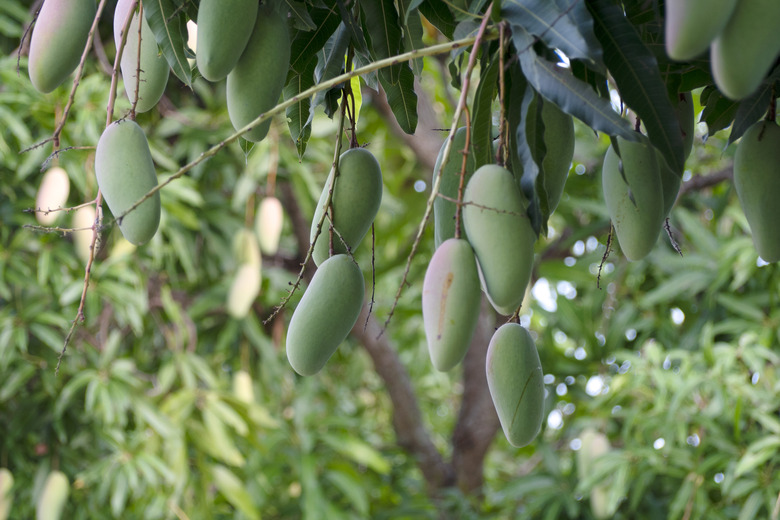How To Induce A Mango Tree To Flower
We may receive a commission on purchases made from links.
Mangoes (Mangifera indica) are one of the special delights of living and gardening in a tropical climate. The mango flowers are lovely and are followed by sweet, fragrant fruit with juicy, sweet flesh in a shade between pale yellow and deep orange. It's altogether a pleasant, sensual experience.
If you are growing mangoes, who can blame you if you want to make sure your tree flowers? No flowers means no fruit. Your best bet is to understand the mango tree's cultural requirements and attempt to provide the best care possible.
Meet the Mango Tree
Meet the Mango Tree
If you've visited Hawaii, Mexico, or even warmer areas of California, you have undoubtedly seen mango trees. They are tall trees — up to 90 feet tall and almost as wide — and broadleaf evergreens that are relatively slow-growing. The trees can live for hundreds of years. Some specimens still producing fruit are over 300 years old.
Mango trees have simple, slender leaves that are some 12 to 16 inches long. Young leaves are yellow-green, purple, or copper, while mature leaves are a deep green, shiny, and leathery. Flowers grow in pyramidal panicles at the branch tips, each with several hundred white flowers. Each tree bears both male flowers that produce pollen and bisexual flowers that produce fruit.
Understand Mango Fruiting
Understand Mango Fruiting
Once the flowers appear, mangoes rely on insects for pollination. This is usually accomplished by flies, wasps, and bees. Most mango varieties produce flowers in early spring and fruit that ripens in summer. Mango fruit is best if it ripens on the tree. It matures some 100 to 150 days after flowering.
This is not always the case, however. Some mango varieties produce flowers and fruit in alternate years. For example, this is the case with the Haden cultivar (Mangifera indica 'Haden'). Once popular in Hawaii, its every-other-year fruiting has moved it well down the list.
Some recommend burning a smudgepot or other smoke-producing device near your mango tree in early spring before flowers form on the tree. This is a traditional Filipino technique for forcing mango trees to bloom. Since smoke contains ethylene, it can be effective in causing trees to bloom.
Grow the Mango Tree
Grow the Mango Tree
Giving a mango optimal cultural conditions increases your chances of fruit and flowers. The trees need a warm climate, a full-sun location, and excellent air drainage in winter. If possible, plant it at the top or in the middle of a slope. If growing it in the desert, the mango tree requires shading, while trees growing in coastal locations will profit from a planting site against a south wall to maximize heat.
Mangoes are not picky about soil; almost any well-drained soil will be fine, though deep, slightly acidic soil is preferable whether sandy, loam, or clay. Avoid heavy, wet soils. A pH between 5.5 and 7.5 is preferred. They need watering during warm weather through the harvest. Irrigation once or twice a week will suffice in mild climates, but more regular watering, almost daily sometimes, is needed in the desert. You'll also need to feed the mango tree with nitrogen fertilizer applications to promote flower production.
